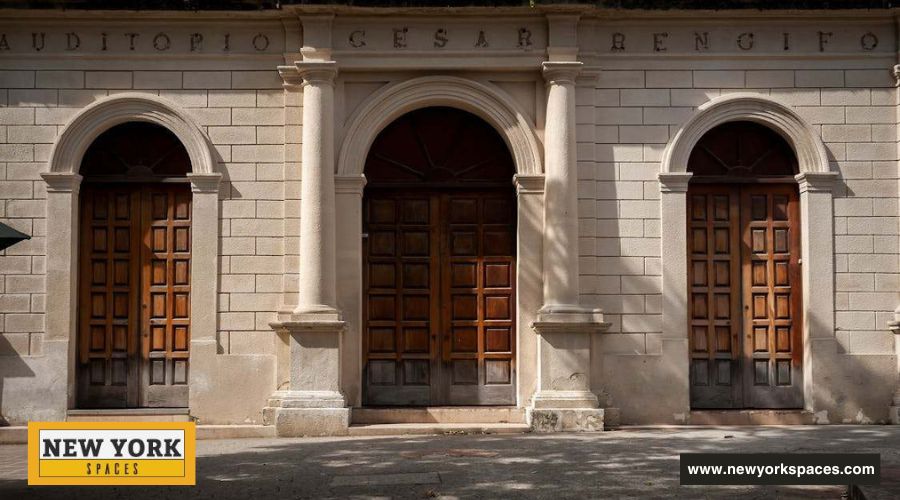Tuscan columns stand as a testament to the elegance of ancient architecture, embodying the simplicity and strength that defined the early Roman and Tuscan styles. Unlike their more ornate Corinthian and Ionic counterparts, Tuscan columns are characterized by their unadorned beauty and straightforward design, making them a favorite among architects and designers seeking to infuse their projects with a touch of classical dignity.
The Origins of Tuscan Columns
The Etruscans’ architectural prowess laid the groundwork for the Tuscan column’s enduring legacy. The Romans created a timeless symbol of strength and simplicity by incorporating these elements. The Tuscan order’s emergence marked a pivotal moment in architectural history, blending functionality with aesthetic grace.
This adaptation highlighted the Romans’ skill in refining and enhancing the architectural innovations of their predecessors. The Tuscan column, therefore, stands not just as a structural element but as a testament to the rich cultural exchange between the Etruscans and Romans.
Characteristics of Tuscan Columns
- Unfluted Shafts: This feature enhances the columns’ visual weight and grounding presence, embodying the Tuscan order’s emphasis on structural integrity. The smooth surface also allows for a play of light and shadow, subtly adding to the column’s aesthetic appeal.
- Simple Bases: Their minimalistic design contributes to the Tuscan column’s overall sense of solidity and simplicity, reinforcing the architectural principle that beauty lies in functional clarity. The lack of intricate details ensures that the column’s form remains the focal point of its architectural statement.
- Plain Capitals: The simplicity of Tuscan capitals underscores the order’s preference for understated elegance, allowing the column to integrate seamlessly with various architectural styles. This lack of ornamentation emphasizes the structural role of the column, focusing attention on its material and form.
- Proportions: The measured proportions of Tuscan columns reflect a harmonious balance between height and diameter, creating an impression of stability and grace. This balance is key to achieving the timeless elegance that Tuscan columns bring to structures, demonstrating that simplicity does not preclude sophistication.
The Use of Tuscan Columns in Architecture
The adaptability of Tuscan columns to serve both structural and decorative purposes has cemented their place in a wide array of architectural projects beyond the confines of historical accuracy. Contemporary architecture often uses them to evoke a sense of tradition and solidity, bridging the gap between the past and present. This ability to blend with modern aesthetics while imparting an air of classical dignity allows
Tuscan columns enhance spaces’ visual and emotional impact, ranging from public edifices to private residences. Their continued popularity underscores the enduring relevance of classical principles in shaping our built environment, demonstrating that the Tuscan column, with its roots deeply embedded in history, remains a vibrant and adaptable architectural design component.
In Ancient Roman Architecture
The Romans’ adoption of Tuscan columns was a testament to their engineering ingenuity, allowing them to construct monumental edifices that have stood the test of time. These columns bore the weight of massive structures and symbolized the Roman ideals of strength and endurance.
The widespread use of Tuscan columns in ancient Rome facilitated the spread of Roman architectural influence, leaving a legacy still in ruins that pepper the landscape of the former empire.
Renaissance and Neoclassical Revival
The Renaissance period marked a reconnection with the classical past, with Tuscan columns serving as a bridge to the revered architectural practices of ancient Rome. Palladio’s use of Tuscan columns was emblematic of the Renaissance’s broader quest for a rebirth of ancient wisdom and beauty in art and architecture.
Into the Neoclassical era, the column’s simplistic elegance became a symbol of enlightenment thinking, mirroring the period’s affinity for classical antiquity and its principles, reinforcing the Tuscan column’s role as a carrier of cultural and historical continuity.
The Architectural Significance of Tuscan Columns
Tuscan columns are structural elements and symbols of a design philosophy that values strength, clarity, and restraint. Their simplicity is their strength, offering a counterpoint to the more decorative orders and reminding us of the power of unadorned beauty.
Symbolism and Aesthetic Appeal
- Strength and Stability: The robustness of Tuscan columns conveys a sense of strength and permanence, making them ideal for buildings intended to stand the test of time.
- Simplicity and Elegance: The unadorned nature of Tuscan columns speaks to a minimalist aesthetic that values elegance over ostentation.
- Versatility: Due to their simple design, Tuscan columns can complement various architectural styles, from the traditional to the modern.
Design Considerations When Using Tuscan Columns
When incorporating Tuscan columns into a design, architects must consider several factors to ensure they enhance the building’s overall aesthetic and structural integrity.
- Scale and Proportion: The size and proportion of Tuscan columns should be in harmony with the building’s scale and the space they occupy.
- Material Selection: The choice of material can affect the column’s appearance and durability. Stone, concrete, and wood are common choices, each offering aesthetic and structural benefits.
- Placement and Spacing: The placement and spacing of columns must be carefully planned to achieve the desired visual effect and structural support.
- Integration with Other Elements: Tuscan columns should be integrated seamlessly with the building’s design, ensuring they complement rather than compete with other architectural elements.
Tuscan Columns in Contemporary Architecture
In contemporary architecture, Tuscan columns are popular for those seeking to incorporate classical elements into their designs. They can be found in many buildings, from residential homes to commercial spaces and public buildings, proving that the timeless appeal of Tuscan columns transcends eras and styles.
Examples of Modern Use
- Public Buildings and Monuments: Tuscan columns are often used in courthouses, libraries, and other public buildings to evoke a sense of solidity and tradition.
- Residential Architecture: Tuscan columns can add classical elegance to homes, whether as part of the exterior facade or interior spaces such as entryways and living rooms.
- Commercial Spaces: Retail spaces, hotels, and restaurants sometimes employ Tuscan columns to create an atmosphere of refined simplicity and durability.
Conclusion
Tuscan columns embody the essence of classical architecture, offering a blend of strength, simplicity, and beauty that has captivated architects and designers for centuries. Their enduring popularity is a testament to their versatility and timeless appeal, making them a perennial favorite in traditional and contemporary designs. As we continue to draw inspiration from the past, Tuscan columns remain a powerful symbol of our ongoing dialogue with history, reminding us of the enduring values of stability, clarity, and elegance in architecture.


